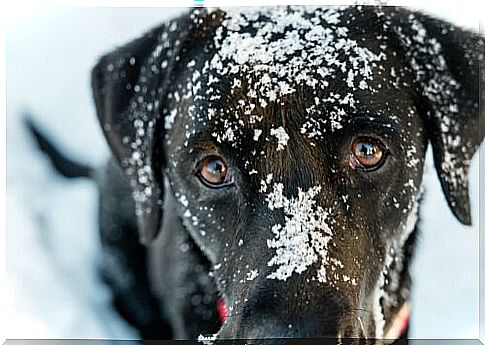Hypothermia In Dogs

The hypothermia in dogs you should heed, especially in the winter months. It is about an abnormally low body temperature, which in extreme cases can be life-threatening.
When does hypothermia occur in dogs?
Of hypothermia in dogs is called from 32 ° C, since the normal temperature of a dog than the should be slightly higher a person: about 38 ° C; However, temperature drops below 35 ° C should already alarm you.
This condition can occur due to particularly low outside temperatures. Puppies are especially vulnerable, especially after they are born, so it can happen even if it’s not very cold.
Postoperative dog hypothermia
Hypothermia in dogs can also occur after surgery, as many surgeries require veterinarians to open the abdomen.
As a result, they expose the inside of the body at temperatures around 10 degrees below their body temperature.
So during long operations, the intestines are exposed to a low temperature without the protection of the fat, skin and fur.
Usually this is solved in veterinary clinics with electric blankets and in hospital stays with heating. They are a good way to combat hypothermia in dogs.

What are the symptoms of hypothermia in dogs?
Typically, hypothermia in dogs begins with weakness, tremors and, of course, with a decrease in body temperature.
You can check the temperature in your pet’s anus with a clinical thermometer to monitor the numbers mentioned earlier.
You can see the hypothermia well in the ears. If you experience these symptoms but don’t have a thermometer available, cold ears and tremors can tell that your dog has hypothermia.
The cold can also cause symptoms that are similar to those of skin dehydration, so your pet can have tight and dry skin.
How is hypothermia treated in dogs?
You need to raise your pet’s temperature. For milder hypothermia, it is sufficient to move your pet to a warm place and wrap it in a blanket while you check to see if their temperature rises.
However, in more severe cases, you’ll need a heater and a veterinarian exam. And if things get worse, your pet could die of hypothermia.

Hypothermia is especially severe when it causes movement problems. Hypothermia can damage the pads. In addition, it can lead to muscle weakness or paralysis.
If your dog has movement problems after a day in the cold, see the veterinarian immediately.
If you go to a cold place, you may be able to protect your dog from the cold by using pet clothing. This is not a fad, it is about the health of your furry friend.
Even if you are well informed, it is important to the care of your pet that diseases are treated by qualified professionals and not taken lightly.









